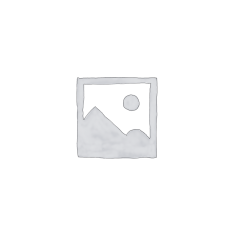Description
ABSTRACT
The paper deals with fabrication of a steel bending machine. The main purposes of this research are to construct a spiral or scroll metal bending machine and to do the performance tests. The aim of this project is to develop a portable scroll metal bending machine to bend sheet into G-curves and the other spiral shapes. In this research, mild steel shaft is selected for design to obtain high strength. The estimated diameter of scroll bender is 140mm and the distance between the head of the lever and scroll bender is 130m. Pillow block bearing UCP205 is selected for the clockwise rotation of the machine. Therefore, the determination of research design is totally safe. As a lot of time is consumed and mistakes are been made when metal bending is made by hand, so using bending machine will save the waste time and mistakes. The size of machine is small and it is convenient for portable work. No skill worker is required to operate the machine. The total cost of fabricating the machine is N69850.
TABLE OF CONTENTS
TITLE PAGE
APPROVAL PAGE
DEDICATION
ACKNOWLEDGEMENT
ABSTRACT
TABLE OF CONTENT
CHAPTER ONE
- INTRODUCTION
- BACKGROUND OF THE PROJECT
- HISTORICAL BACKGROUND OF STEEL BENDING MACHINE
- PROBLEM STATEMENT
- AIM AND OBJECTIVES OF THE PROJECT
- ADVANTAGES OF THE PROJECT
- SCOPE OF THE PROJECT
- PURPOSE OF THE PROJECT
CHAPTER TWO
LITERATURE REVIEW
2.0 LITERATURE REVIEW
2.1 PROJECT BACKGROUND
2.2 REVIEW PREVIOUS WORK
2.3 TYPES OF BENDING MACHINES
CHAPTER THREE
3.0 METHODOLOGY
3.1 DESIGN FLOW CHART
3.2 MATERIAL SELECTION
3.3 NSTRUCTION FOR THE CHOICE OF MATERIALS CAST
MILD STEEL
3.4 DESIGN CONSIDERATIONS
3.5 PROJECT METHODOLOGY
CHAPTER FOUR
4.0 RESULT ANALYSIS
4.1 DESIGN OF BENDING MACHINE
4.2 MACHINE PARTS
4.3 MACHINE OPERATION
4.4 CALCULATION
4.5 INSPECTION AND MAINTENANCE
4.6 ADVANTAGES LIMITATIONS
4.7 BILL OF ENGINEERING MEASUREMENT AND EVALUATION
4.8 COST ANALYSIS
4.8.1 LABOUR COST
4.5.2 OVERHEAD COST
4.8.3 SUMMARY OF COSTS
CHAPTER FIVE
- CONCLUSIONS
- RECOMMENDATION
REFERENCES
CHAPTER ONE
1.0 INTRODUCTION
1.1 BACKGROUND OF THE STUDY
Metal bending fabrication plays an important role in the metal manufacturing world. Metal bending machine is used in the production of materials ranging from tools, to hinges, automobiles etc. Sheet metal fabrication ranges from deep drawing, stamping, forming, and hydro forming, to high-energy-rate forming (HERF) to create desired shapes. Fascinating and elegant shapes may be folded from a single plane sheet of material without stretching, tearing or cutting, if shape rolling of sheet metal is the bending continually of the piece along a linear axis. This causes alteration of the original form of the sheet as it passes through a pathway of the G-scroll bender. The present invention relates to plate bending machines of the type which operates with rolls. Such machines involve certain well-known difficulties in respect of bending plates into spiral shape. The invention has for its object to remedy this drawback and to enable, by including auxiliary means, the bending of spiral or scroll metals and the like.
The main characterizing feature of the plate bending machine according to the invention resides in that it comprises a pin which is adapted, during the bending operation, to be moved into engagement with one of the rolls in a substantially radial direction so as to serve as an abutment for one edge of the blank to be bent.
This machine is designed to wrap the workpiece around the dies to make a spiral or a “scroll” shape.
With this machine, one can produce repeatable scrolls of the same shape and size each time without much labour and lesser time.
1.2 HISTORICAL BACKGROUND OF STEEL BENDING MACHINE
Before steel came into general use during the latter part of the 19th century, curved structures were frequently constructed from iron, which is cast in liquid form in a curved profile or built up from wrought iron components, either with shaped web plates or in the form of lattice trusses. Because wrought iron was very soft, blacksmiths could curve small components by hot forging.
During the 20th century, rolled steel joists were curved by metal benders for use as colliery arches to support underground workings. Hydraulic presses were used initially to curve the joists but eventually three-roll bending machines were introduced for bending metal. Because joists have very thick webs, they are not susceptible to buckling during the bending operation.
Metal benders were also used in the fabrication of ship hulls. As early as 1910, bending equipment incorporating rollers were used to curve bulb flats, bulb angles and tees for marine use. During the period from 1930 to 1950, small curved steel components were also used in relatively simple building structures. Nissen huts, aircraft hangers and Dutch barns often had a supporting structure of curved steel angles, tees or small rolled I sections.
From the late 1940s, universal beams (I sections with parallel flanges) came into general use. These parallel flange sections, which had relatively thin webs (in comparison with joists), were difficult to curve about the major axis because the force needed to bend a complete beam was actually greater than that which caused local buckling of the web. In the mid-1970s, steel bending companies produced bending machines with additional rolls to support the web were introduced. This development allowed steel benders to curve large universal beams about the major axis economically and accurately and had a significant influence on the design of curved steel structures and metal bending became a common feature in the construction industry. Over the course of time, induction bending, a hot bending process that was developed originally for bending process pipework, has also been adapted to suit the needs of structural steelwork.
During the last two decades of the 20th century, the demand for curved steel members in building structures increased considerably. The focus of capital investment on commercial rather than industrial buildings, and the resultant construction of new offices, airport terminals, stations, superstores and leisure facilities provided the market environment in which structural steel flourished and metal bending became a viable business in its own right, offering bending of metal in a variety of shapes and offering Architects a way of achieving their visions.
More specifically, with the introduction of equipment with the capability of bending steel/metal accurately and economically, the inherent advantages of steel framed construction were complemented by new design possibilities that had previously been confined to alternative forms of construction or limited by cost considerations. The main advantage of using curved members is the undoubted aesthetic appeal of curved steel sections and tubes, which has opened up new horizons for the creative design of steel structures.
1.3 PROBLEM STATEMENT
Traditional method of bending steel into a spiral or scroll shape is by heating the steel with higher temperature and this wastes lot of time and is labour intensive. Steel Bending machine is used to overcome these challenges. This machine is used to bend steel into spiral curves. And it is convenient for portable work. This machine is the easy way to be carried and can be used at any time and any place. It eases human effort and no required skill workers to operate the machine.
1.4 AIM AND OBJECTIVES OF THE PROJECT
The aim of this project is to fabricate a manual steel bending machine. The objectives of the study are:
- To make work easy and simple.
- To reduce the time for
- To fabricate a manual spiral or scroll metal bending
- To design the components required for this
- To design the machine which is cost efficient and easy to handle.
1.5 ADVANTAGES OF THE PROJECT
The major uses of this bending machine is given as follows
- This machine is helpful in bending the metal sheets
- It can bend the sheet without any
- Manually operated to do the task at domestic
- Also, helpful in moving from one place to another
- Through this machine, no heavy labour is required.
- Easy to handle and
- Little maintenance is required for such type of
1.6 SCOPE OF THE PROJECT
The scope of this work covers building a steel bending machine that uses a G-scroll bender to bend steel into a spiral or scroll shapes. During the bending process the plate is passed through G-scroll bender and gradually draws the lever of the machine clockwise in other to get the spiral-shape.
1.7 PURPOSE OF THE PROJECT
The purpose of this project is to therefore design a simple, easily operated steel bending machine that is sturdy and strong.


Reviews
There are no reviews yet.